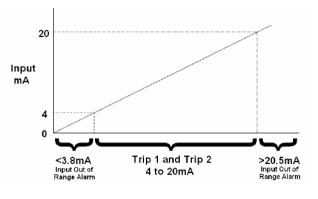
05 November 2013 | Lee-Dickens Ltd
Lee-Dickens Namur NE43 Trip Amplifiers Achieves SIL2 Rating
Trip amps comply with NAMUR NE43 recommendations and meet IEC61508 safety requirements
Lee-Dickens, the UK instrumentation manufacturer, announces the launch of four new trip amplifiers that comply with the NAMUR NE43 recommendations.Furthermore, these high quality non-processor based trip amplifiers have been assessed to IEC61508 by the independent safety integrity consultant Areva Risk Management Consulting Ltd and achieve SIL2 rating with a proof test interval of one year.
The NAMUR NE 43 recommendation document has been produced by the NAMUR members and sets out to define the “Out of Range” figures that are to be used with the industry standard 4 to 20mA signal. Lee-Dickens has taken these figures and produced four trip amplifiers that have the standard process trips as well as an independent “out of range” trip. The “out of range” trip is activated when the input signal either falls below 3.8mA or exceeds 20.5mA.
The latest SIL rated instruments are the BD9431and the BD9432, which are AC powered Single and Dual Level Trip Amplifiers respectively, and the BM9431 and the BM9432, which are DC powered Single and Dual Level Trip Amplifiers respectively.
LEE-DICKENS LTD
Desborough, Kettering, Northants, NN14 2QW
Tel: (01536) 760156 Fax: (01536) 762552
Amplifiers also include a forth trip relay that is activated when the power is applied to the instrument.
SIL Ratings
Safety integrity levels refer specifically to the probability of failure on demand (PFD) - or to what extent the end user can expect his process to perform safely, and in the case of failure, fail in a safe manner. By selecting devices that are rated for use within a desired SIL environment, end users can optimise their processes for risk.
The advantage for end users selecting a product with a SIL rating and accompanying assessment summary is that reliability calculations are already performed and available to the end user. The user also has the security of knowing that a third party has reviewed the reliability statistics for the product, and most importantly the attached certification report that accompanies each product contains important information ranging from restrictions of use and also reliability statistics.